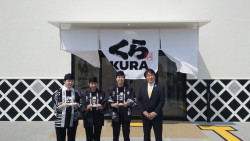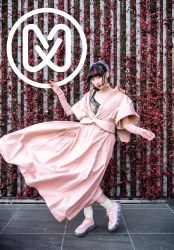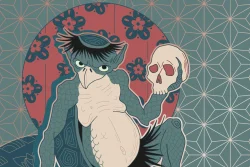
Originally published on metropolis.co.jp on October 2013
At times, it seems the Big Mikan is influenced by a special force. Dr. John put it well when he sang, “I was in the right place, but it must’ve been the wrong time.” Some refer to it as karma. I call it Murphy’s Law—the Japanese version.
When you’re a pedestrian, taxis zip by. They floor it through yellow traffic signals and pass slow vehicles without hesitation. However, when you are a passenger, things are quite different. The driver acts as if operating a school bus. He stops when signals turn amber or when children would like to cross the road between crosswalks or when someone wants to enter the road from a parking lot. He is so kind, so courteous. Consequently, numbers on the meter tumble rapidly as if in a pachinko parlor. Typically, he’s just arrived from Sendai and is not quite sure where Shinjuku is. More than once, I suggested the driver and I change roles.
Rest assured, whenever you go to the swimming pool, you’ll have just put a toe in the water when it’s time for the five-minute rest period. Such tranquility as there may be is shattered by a long and loud announcement that echoes in the confines of the pool area. And nobody seems to be listening.
Many are the bakeries that display a large color poster of baguettes, a Camembert sandwich, a bowl of olives and the like. It’s virtually guaranteed these establishments do not sell any of these items. The “French” bread is as limp as an Irishman after six pints of Guinness on a Friday night; the sandwiches are made from crust-less, tasteless white bread and are smothered in cellophane. And then there is the yakisoba pan. The picture is there just for the ambience. When it comes to Mexican restaurants, the taste of the guacamole is inversely proportional to the number of sombreros on display.
The morning commute is the hardest part of your day. But you’ve learned a trick or two over the years. When you board the crowded train, you’ve got to make a split-second decision over where to stand. You spot him—he’s sitting fidgeting and looking at his watch. He’s sure to be getting off soon and you’ll have his seat. As the stations pass, he’s looking out the window to get his bearings. Any moment now. You’ll be able to read the paper, do the sudoku, check email and perhaps fire off a few. Suddenly, the woman on his right stands up and leaves and the man next to you slides into her seat. Fidget, watch, bearings. After 30 minutes of standing, hoping and praying, you arrive at your station tired and annoyed. Sitting man gets off at the next stop.

You are between a rock and a hard place and need to get to, say, Ebisu from Otemachi for an important meeting. There is no direct connection; several trains are needed. As you near a ticket gate en route, you have your Suica in your hand. Invariably, the person in front of you does not and neither does he/she move to the side. A man pats himself down like an airport security check; a woman fumbles in her purse. If you push past, you are a rude gaijin. If you don’t, you’re a late gaijin. In either case, you have confirmed expectations.
It is Friday afternoon and you realize that you need some cash for the weekend. Until this moment, your bank’s ATMs have been on every other street corner. But now they have vanished. You walk for blocks gazing at both sides of the street searching in vain for the colorful logo. Have they gone out of business? The banks you don’t deal with seem ubiquitous. Of course, you could pay the ¥105 service charge at any ATM. But it’s the principal: why pay to get your own money? Friday evening is fast approaching. You bite the bullet, pay the fee and get some cash. Shoganai. Yes, but when you turn the next corner …
Lesson learned: measure twice and cut once. Oops, I left the tape measure in the taxi!







